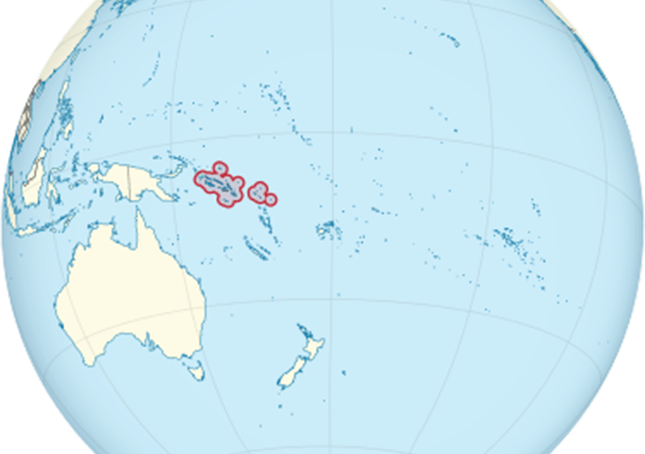British Solomon Islands

The British Solomon Islands Protectorate was first declared over the southern Solomons in 1893, when Captain Gibson R.N., of HMS Curacoa, declared the southern islands a British protectorate. Other islands were subsequently declared to form part of the Protectorate.
After the Anglo-German Declarations about the Western Pacific Ocean, the Protectorate was first declared over the southern Solomons in 1893. The formalities in its establishment were carried out by officers of the Royal Navy, who hoisted the British flag and read Proclamations on twenty-one islands. In April 1896, Charles Morris Woodford, was appointed as an Acting Deputy Commissioner of the British Western Pacific Territories. From 30 May to 10 August 1896, HMS Pylades toured through the Solomon Islands archipelago with Woodford, who had been sent to survey the islands, and to report on the economic feasibility of the British Solomon Islands Protectorate.
On 29 September 1896, in anticipation of the establishment of the British Solomon Islands Protectorate, Woodford purchased the island of Tulagi, which he has selected as the site for the administrative centre. The Colonial Office appointed Woodford as the Resident Commissioner in the Solomon Islands on 17 February 1897. He was directed to control the labour trade operating in the Solomon Island waters and to stop the illegal trade in firearms. Arthur William Mahaffy was appointed at the Deputy Commissioner in January 1889. He was based in Gizo, his duties included suppressing head hunting in New Georgia and neighbouring islands.
Bellona and Rennell Islands and the Stewart Islands were added to the Protectorate in 1897, and the Santa Cruz group, the Reef Islands, Anuda (Cherry), Fataka (Mitre) and Trevannion Islands and Duff (Wilson) group in 1898. On 18 August 1898 and 1 October 1898, the High Commissioner for the Western Pacific issued Proclamations which declared (apparently superfluously) that all those islands should “henceforth” form part of the Protectorate.
The two Proclamations of 1898 were superseded by one dated 28 January 1899, which was apparently intended not to consolidate them but also to correct geographical errors: it lists “the Reef Islands, Swallow Group” and a different group of islands referred to collectively as “the Swallow Group,” and it includes Trevannion in the Santa Cruz group.
By a Convention signed in 1899 and ratified in 1900, Germany renounced her rights in the islands to the east and south-east of Bougainville, and in October 1900, the High Commissioner issued a Proclamation extending the Protectorate to the islands in question, i.e. Choiseul, Ysabel, Shortland and Fauro Islands (each with its dependencies), the Tasman group, Lord Howe’s group and Gower Island.
Its establishment followed missionary activity which began in the mid 19th century and the establishment of a German Protectorate over the Northern Solomons, following an Anglo-German Treaty of 1886. German interests were transferred to the United Kingdom under the Samoa Tripartite Convention of 1899, in exchange for recognition of the German claim to Western Samoa.
